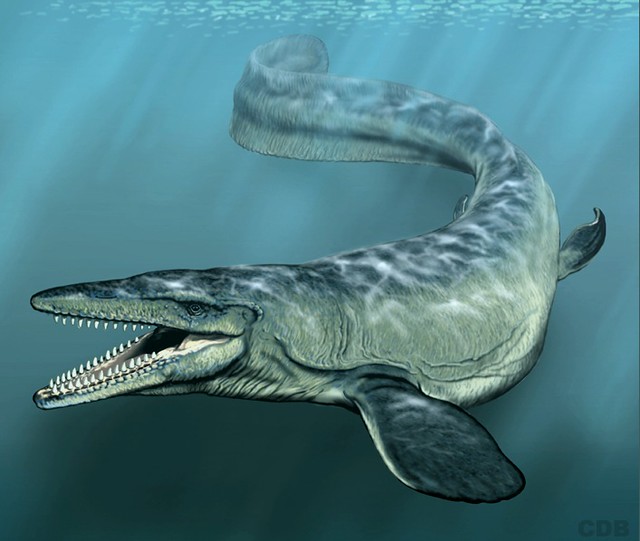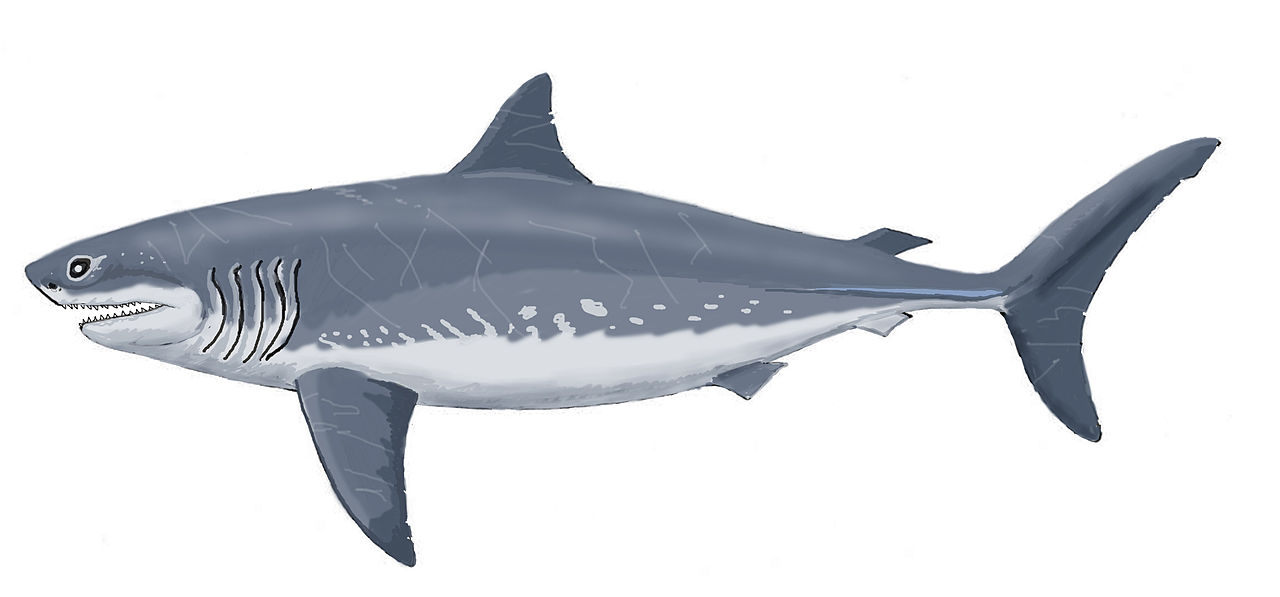Post by dinosauria101 on Aug 22, 2019 10:47:22 GMT 5
Tylosaurus proriger
Tylosaurus was a mosasaur, a large, predatory marine lizard closely related to modern monitor lizards and to snakes. Along with plesiosaurs, sharks, fish, and other genera of mosasaurs, it was a dominant predator of the Western Interior Seaway during the Late Cretaceous. Tylosaurus proriger was among the largest of all the mosasaurs (along with Hainosaurus and Mosasaurus hoffmannii), reaching maximum lengths of 14 m (46 ft). A distinguishing characteristic of Tylosaurus is its elongated, cylindrical premaxilla (snout) from which it takes its name and which may have been used to ram and stun prey and also in intraspecific combat. Stomach contents associated with specimens of Tylosaurus proriger indicate that this ferocious mosasaur had a varied diet, including fish, sharks, smaller mosasaurs, plesiosaurs, and flightless diving birds such as Hesperornis. In some paleoenvironments, Tylosaurus seems to have preferred shallow, nearshore waters (as with the Eutaw Formation and Mooreville Chalk Formation of Alabama), while favoring deeper water farther out from shore in other environments (as with the Niobrara Chalk of the western U.S.).

Ginsu Shark - Cretoxyrhina mantelli
Cretoxyrhina mantelli, the "Jaws of the Cretaceous", was a shark that lived in the Cretaceous period in the in the Western Interior Sea, about 100 million years ago. C. mantelli grew up to 24 feet (7 meters) long, and is known from several nearly complete skeletal fossils. Its name means "Mantell's chalk-sharp-nose".According to Shimada, associated fossil remains with evidence of digestive damage suggest that probable fish prey of C. mantelli included the massively jawed, 14-foot (4.25-metre) long Xiphactinus, which resembled a dagger-toothed tarpon and was a powerful predator in its own right. Based on a few tooth-scarred, associated mosasaur vertebrae, Shimada suggests that C. mantelli also tackled these 10- to 40-foot (3- to 12- metre) long marine reptiles of the late Cretaceous. While it is tempting to imagine titanic undersea battles between a giant shark and a sea dragon, it seems far more likely that Cretoxyrhina more commonly fed on large pelagic bony fishes, taking juvenile mosasaurs when the opportunity arose, and perhaps even dining on the occasional long-necked plesiosaur. Shimada concluded that Cretoxyrhina mantelli occupied a top predatory niche comparable to that of the modern White Shark (Carcharodon carcharias). Despite its fearsome size and armament, C. mantelli did not long survive, becoming extinct by about 90 million years ago. Known specimens of the Ginsu Shark are about the same size as the largest recorded Great Whites Sharks.

Credit to Wikipedia
Tylosaurus was a mosasaur, a large, predatory marine lizard closely related to modern monitor lizards and to snakes. Along with plesiosaurs, sharks, fish, and other genera of mosasaurs, it was a dominant predator of the Western Interior Seaway during the Late Cretaceous. Tylosaurus proriger was among the largest of all the mosasaurs (along with Hainosaurus and Mosasaurus hoffmannii), reaching maximum lengths of 14 m (46 ft). A distinguishing characteristic of Tylosaurus is its elongated, cylindrical premaxilla (snout) from which it takes its name and which may have been used to ram and stun prey and also in intraspecific combat. Stomach contents associated with specimens of Tylosaurus proriger indicate that this ferocious mosasaur had a varied diet, including fish, sharks, smaller mosasaurs, plesiosaurs, and flightless diving birds such as Hesperornis. In some paleoenvironments, Tylosaurus seems to have preferred shallow, nearshore waters (as with the Eutaw Formation and Mooreville Chalk Formation of Alabama), while favoring deeper water farther out from shore in other environments (as with the Niobrara Chalk of the western U.S.).

Ginsu Shark - Cretoxyrhina mantelli
Cretoxyrhina mantelli, the "Jaws of the Cretaceous", was a shark that lived in the Cretaceous period in the in the Western Interior Sea, about 100 million years ago. C. mantelli grew up to 24 feet (7 meters) long, and is known from several nearly complete skeletal fossils. Its name means "Mantell's chalk-sharp-nose".According to Shimada, associated fossil remains with evidence of digestive damage suggest that probable fish prey of C. mantelli included the massively jawed, 14-foot (4.25-metre) long Xiphactinus, which resembled a dagger-toothed tarpon and was a powerful predator in its own right. Based on a few tooth-scarred, associated mosasaur vertebrae, Shimada suggests that C. mantelli also tackled these 10- to 40-foot (3- to 12- metre) long marine reptiles of the late Cretaceous. While it is tempting to imagine titanic undersea battles between a giant shark and a sea dragon, it seems far more likely that Cretoxyrhina more commonly fed on large pelagic bony fishes, taking juvenile mosasaurs when the opportunity arose, and perhaps even dining on the occasional long-necked plesiosaur. Shimada concluded that Cretoxyrhina mantelli occupied a top predatory niche comparable to that of the modern White Shark (Carcharodon carcharias). Despite its fearsome size and armament, C. mantelli did not long survive, becoming extinct by about 90 million years ago. Known specimens of the Ginsu Shark are about the same size as the largest recorded Great Whites Sharks.

Credit to Wikipedia



